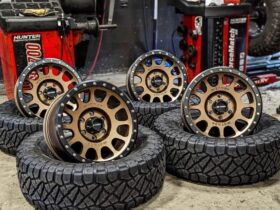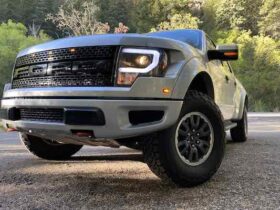The most important part of any vehicle is the tire. Maintaining the tires will ensure your vehicle’s safety and passengers’ safety. Let’s say you run out of gas in the middle of the road. In that case, your truck will slowly come to a stop. In another scenario, let’s assume that your engine is not maintained and your truck refuses to start. In both scenarios, you will face problems but nothing dangerous. Both the scenarios will not lead to any mishaps on the road.
On the other hand, if you are driving with incorrect truck psi in your tires, there is a chance of disaster at any time or at any speed. This is why it is essential to keep your tire pressure in check. I will mention everything a truck owner needs to know about tire air pressure in this article.
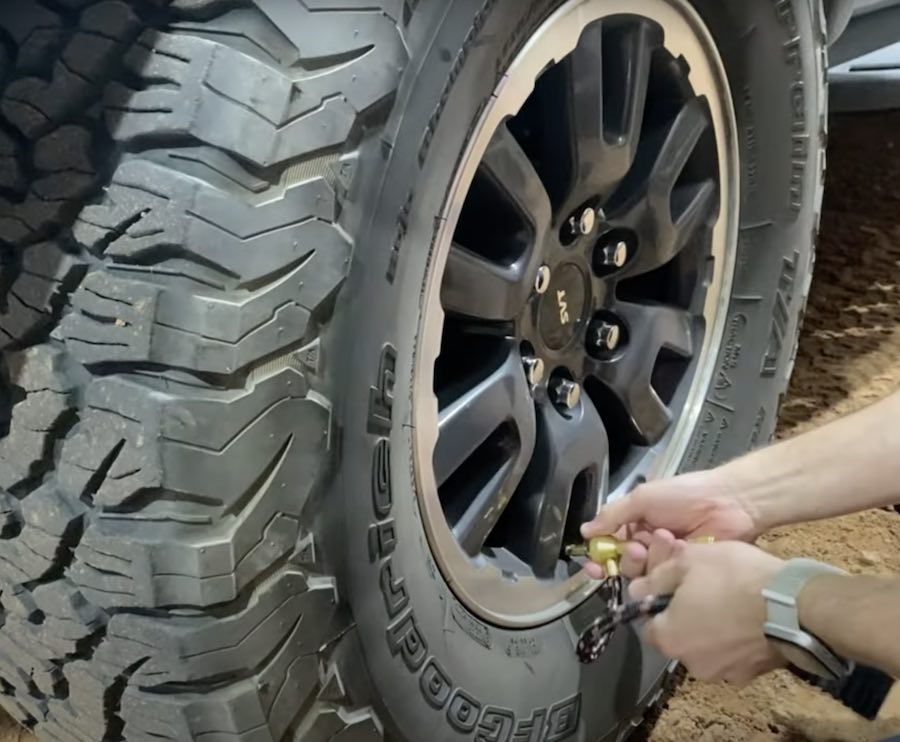
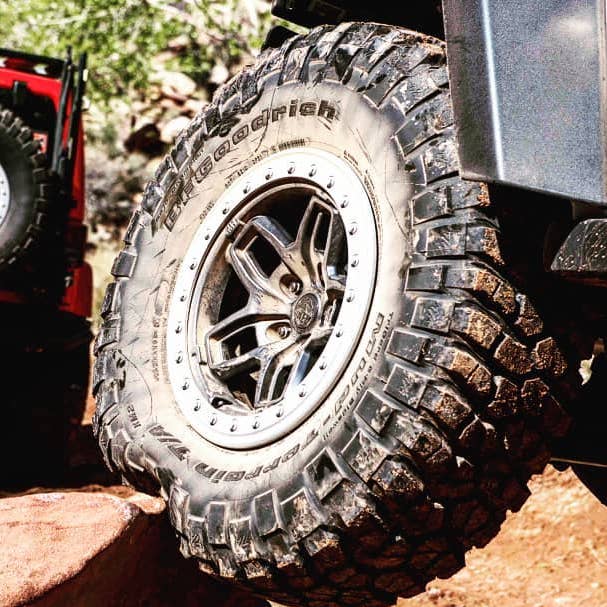
Why is tire pressure necessary?
When you are driving with tires that are not aerated, there are chances of sudden tire failures. The significant risk of driving around on improperly aerated tires is that they do not stop you from starting your car. This means you could drive around with unsafe tires due to underinflation or overinflation for weeks and even months. Both the terms will be explained in the next section.
In addition, did you know inaccurately inflated tires can cost you extra cash and affect the performance of your truck? Yes, wrong tire pressure can affect your gas mileage resulting in you paying for more gas.
Underinflated Tires and Overinflated Tires
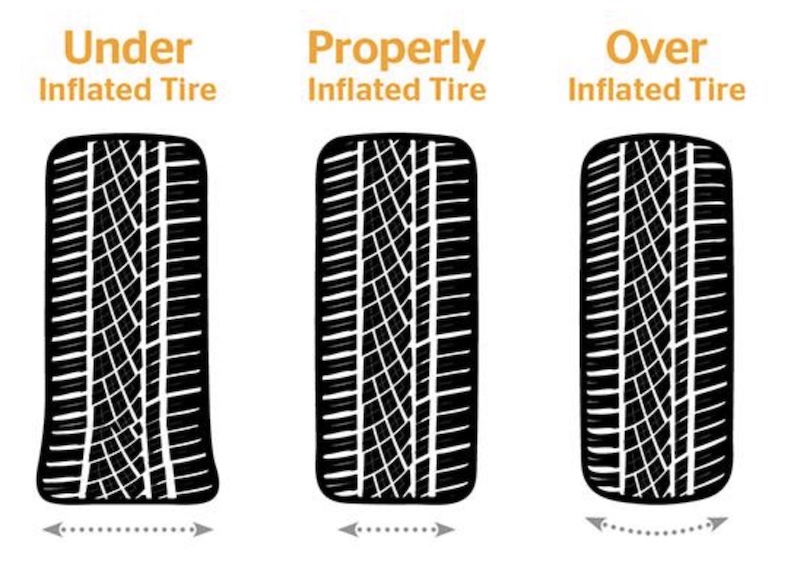
Driving without properly inflated tires can make your truck unstable and negatively affect handling, cornering, and stopping. Further, your truck tire will start to wear out unevenly when you are driving with under-inflated tires, and the contact patch between your truck and the road surface increases. This might sound positive, but it actually isn’t. The increased contact patch causes more friction between the tire and the road. If you do not know what a contact patch is let me tell you. It is basically the section of the vehicle’s tire that is in actual contact with the road surface. An increased contact patch wears out the tire more and leads to an increase in fuel consumption.
If your tire is severely underinflated, you will notice effects on suspension, steering, and braking performance. Imagine turning into a corner and expecting your car to respond, but instead, your car is sluggish and doesn’t turn the way you think it should. Driving with an underinflated tire can be dangerous.
The most common misconception among truck drivers is that driving around with overinflated tires can improve fuel economy. They assume that over-inflated tires have a smaller surface touching the road surface, which means less friction.
This might sound good, but in reality, having less contact with the road surface can negatively impact your truck’s performance. It is incorrect to think you might get better MPG (miles per gallon). Any chance of higher MPG will be negated because your truck won’t ride, steer, or brake as it should. It is much better to avoid extra inflation pressure on your tires.
Tire Pressure monitoring system
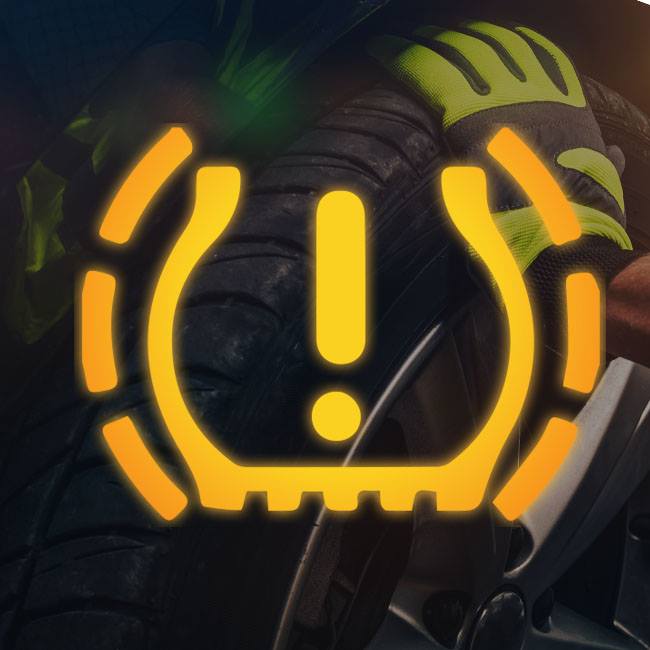
To avoid over-inflation and under-inflation, you must keep your tire pressure in check through TPMS (tire pressure monitoring system) or a calibrated pressure gauge. These monitors let you know if the pressure in your tire is too high or if the tire has lost air due to a leak.
Recommended tire pressure
No Load / Around Town
The manufacturer provides the recommended tire pressure on the inside of the truck door. If you do not find the information, you can look inside the fuel filler flap or your vehicle owner’s manual. The number mentioned tells you the maximum air pressure needed for your truck tires to carry their full load. Using the recommended pressure is the best option when you are not carrying any load or just driving around town. If there is not much weight in the rear and there are no passengers in the car regularly, most truck owners might drop the pressure by 5-8psi to make the ride more comfortable and smooth.
The optimum tire pressure of trucks generally varies depending on certain key factors, including the truck’s weight. The estimated tire pressure of a truck will be between 35 PSI and 40 PSI for the best balance of comfort, fuel economy, traction, and load-bearing capabilities.
Note – You might notice that when you search for truck tire PSI on google, the recommended pressure of a truck is between 90 to 100 PSI. Please do not fall for that information because they are actually talking about trailer tires.
General Off-roading
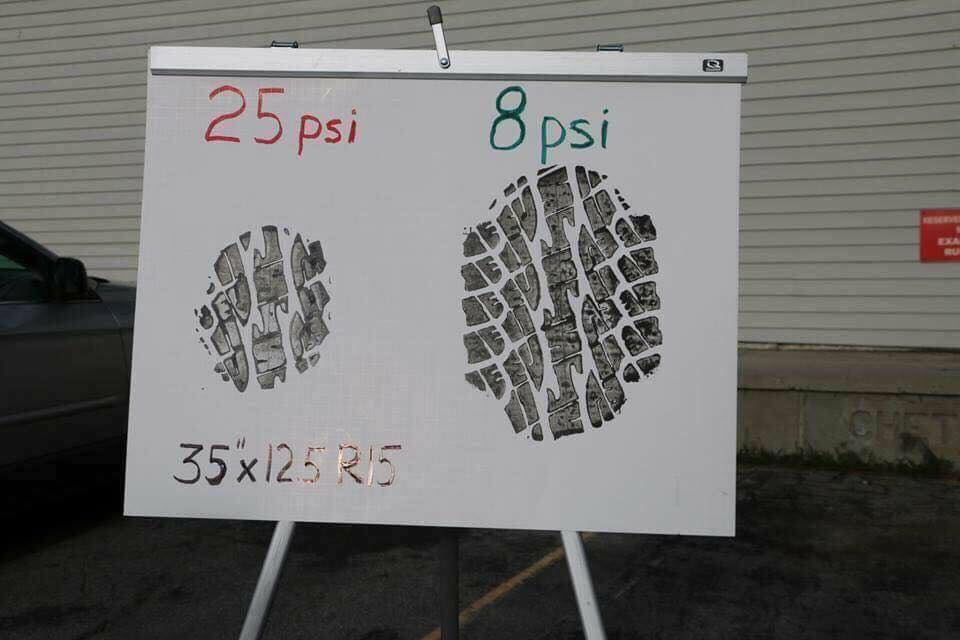
There is no one size fits all psi (pounds per square inch) for trucks. So different trucks will have different tire pressures, but there are some common rules to follow when setting the tire pressure of a truck during off-roading trips. If you don’t have a Beadlock wheel, do not drop your tire pressure below 10 psi.
Find the right wheels for offroading in our Best F150 wheels breakdown
If you drop below 10 psi on your non-Beadlock wheels, you run the risk of your tires de-beading, because there is a locking mechanism to secure the bead of the tire to the wheel. You will be stuck with changing tires in between your trip or end up with a fully damaged set of wheels and tires.
I would recommend starting somewhere between 20-30psi. This will soften your ride, make things more comfortable, and increase the contact patch of the tire (they are on the ground where the tire makes contact with the ground). If you have something like 35- and 37-inch-tall tires, you can lower the tires between 10-12 PSI on a non-Beadlock wheel. With a Beadlock wheel, you can keep the tire pressure between 5-7 PSI.
Sand / Beach
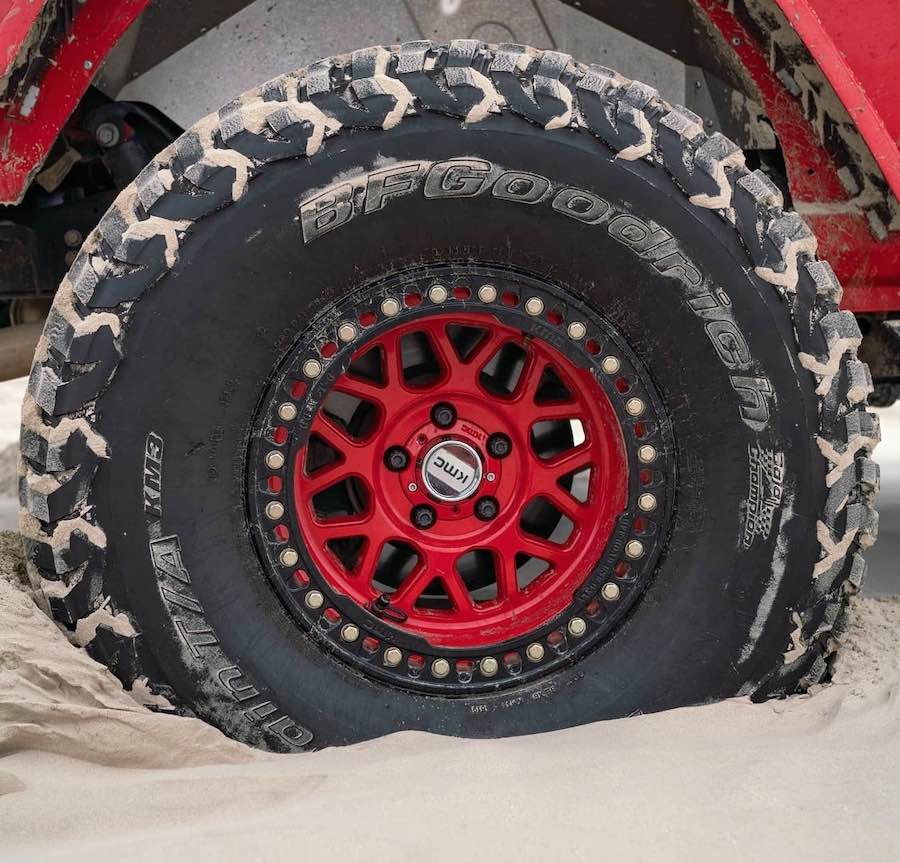
The answer to this is different for every truck. Lighter trucks require lower tire pressure. The most common tire pressure starting point is 18 PSI for softer sand. You can work down from there if required. In addition to that, you can air your tires down if you are having difficulty moving. But remember that the lower your tire pressure is, the easier it is for the tire to roll out of the rim. With a lower tire pressure, you should drive much slower and take corners at a lower speed.
In sand, it’s essential to keep the air pressure down. You need a much larger contact patch than for the street or even typical offroading. This allows your vehicle to float better. If you are going to the sand dunes and will be hooning around and going fast, make sure you have deadlocks or beaded grip technology to keep the tires on the wheel and prevent a tire change in sand (it’s a pain, trust me).
Rock Crawling
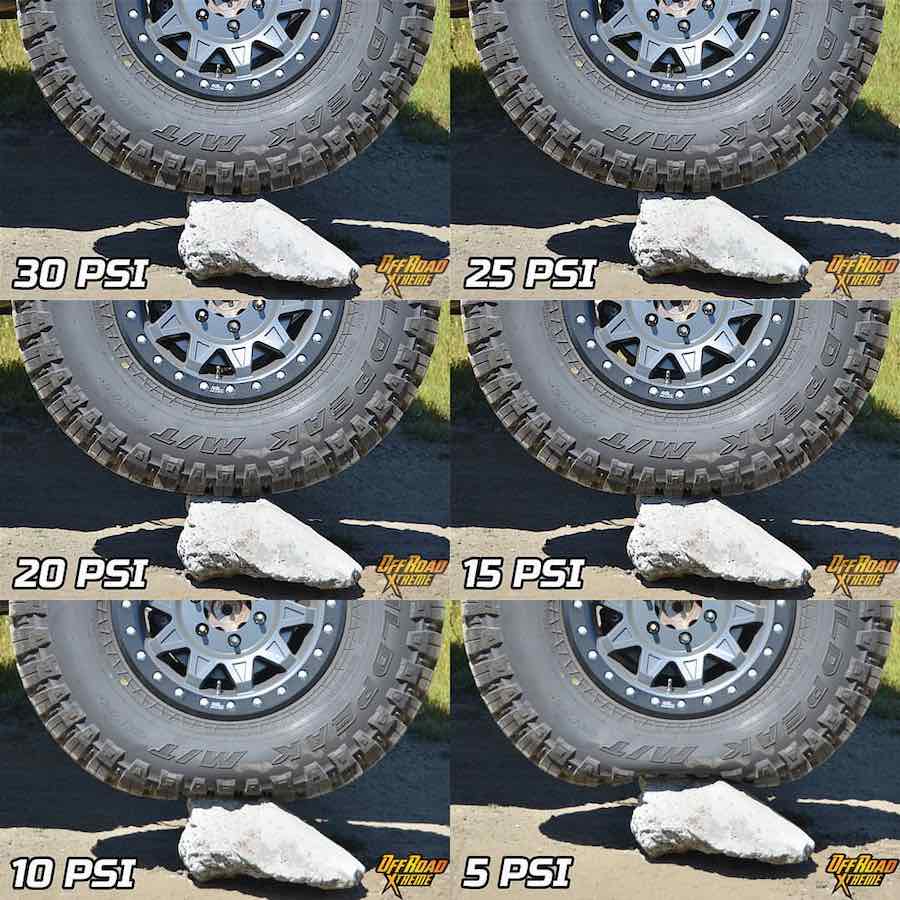
For rock crawling, it is suggested you keep your tire pressure between 5-10psi. If you are going this low, only do it if you have a headlock tire that will prevent the tire from de-beading the wheels. Or only go this low in the rear tires where there is a smaller chance of the tire de-beading from the rim.
Nitrogen vs. air
Truck owners have used air for years, and it has worked well. So there is nothing wrong with filling your tires with air. The only added advantage nitrogen has is that the molecules of Nitrogen are larger and slower moving than those of compressed air. For this particular reason, Nitrogen does not seep out of tires as quickly as air does. Thus nitrogen helps to maintain proper pressure for an extended period, and your tires do not lose pressure as quickly as they would in the case of air.
There are numerous benefits of properly inflated tires. For example, the correct air pressure in your tires can last longer and help maximize your fuel economy. So if you are not the type of driver who has the time to check tire pressure regularly, go for a nitrogen-filled tire instead of air.
You May Also Like
Final words
Now you know what tire inflation pressure is best when driving around the town or going on offroading trips. In addition to that, you have to keep specific essential points in mind. Always check your tire pressure when the tires are cold. Do not deflate the pressure in a hot tire. Replace truck tire pressure sensors when getting a new tire or if they show incorrect tire pressure or are over a decade old.
Most importantly, old school methods like kicking the tire to see if the pressure is right do not work anymore. If you do not want to get both your toes and tires replaced, avoid kicking your tires to check air pressure. Instead, use a tire pressure gauge which is available for pretty cheap. If you like our content, please share. Also, mention in the comments what you would like to read about next. For more truck content, follow our site Beyond the Raptor.


